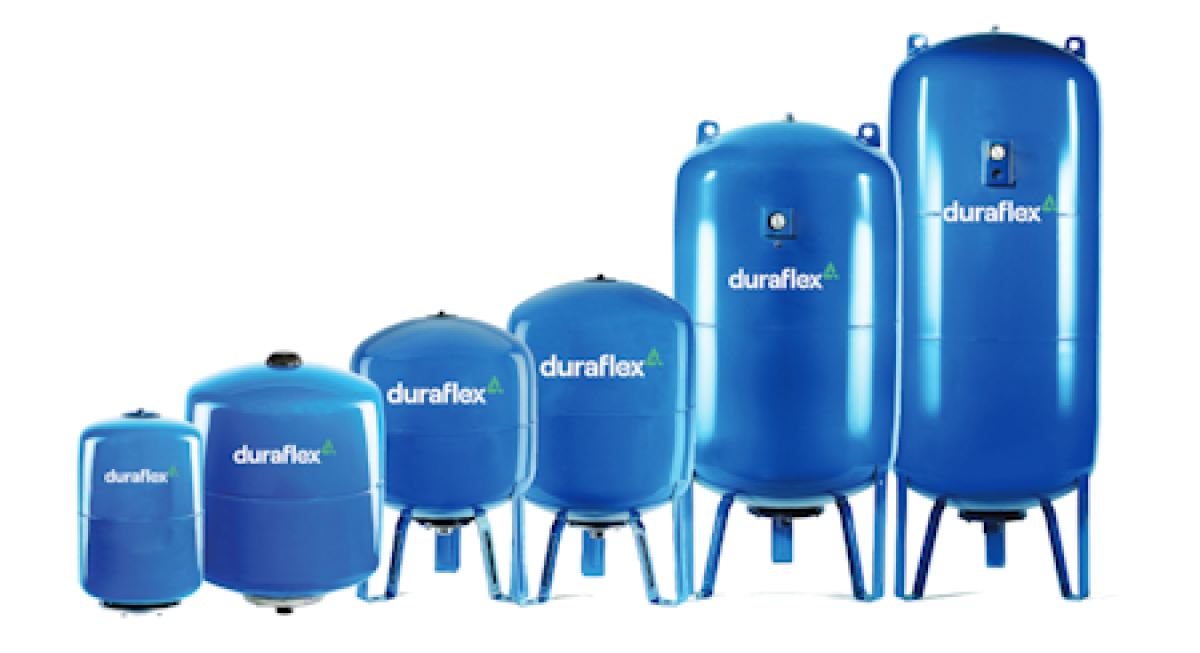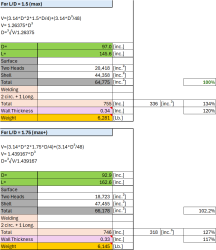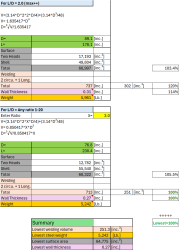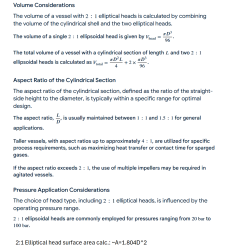Optimum Vessels and Tanks Diameter to Length Proportions

Description
When selecting diameter and length of a vessel for a given volume and pressure, there are few parameters to be considered:
1 - Surface area - affect thermal insulation, paint and thermal conductivity.
2 - Wall thickness - affect welding quantity and labor costs.
4 - Overall weight - Costs
5 - Diameter/Length - Shipment and installation space.
The program provide quick overview of the above parameters. Core Engineering Principle: Multi-Objective Optimization for Pressure Vessel Design
This calculation is finding the optimal diameter-to-length ratio for a pressure vessel by balancing competing economic and engineering factors to minimize total project costs.
The Engineering Logic:
1. Geometric Constraint For any given volume (5,000 gallons), there are infinite combinations of diameter and length that work. The calculation systematically evaluates different Length-to-Diameter (L/D) ratios from 1:1 (short and fat) to 3:1 (long and thin) and beyond.
2. Competing Cost Factors The calculation tracks four key cost drivers that work against each other:
- Surface Area: Affects painting, insulation, and heat loss costs
- Wall Thickness: Smaller diameter = higher pressure stress = thicker walls = more material
- Welding Volume: Total amount of welding required (circumferential + longitudinal seams)
- Overall Weight: Total steel consumption and transportation costs
3. The Trade-offs
- Shorter, fatter vessels: Less welding, but thicker walls and more surface area
- Longer, thinner vessels: Thinner walls and less weight, but more welding and surface area
- Sweet spot: Where the combined costs are minimized
4. Optimization Analysis The calculation shows that as L/D increases:
- Wall thickness decreases (good) - less pressure stress on smaller diameter
- Weight decreases (good) - less total steel
- Welding volume initially decreases then increases (mixed) - fewer circumferential welds, but longer longitudinal welds
- Surface area initially decreases then increases (mixed) - geometric optimization effect
5. Multi-Criteria Decision The "Summary" section identifies the optimal ratios for each individual criterion:
- L/D = 1.5: Minimum surface area
- L/D = 3.0: Minimum welding volume, weight, and wall thickness
The Fundamental Principle: This is engineering economics applied to vessel design - finding the configuration that minimizes total lifecycle costs by mathematically balancing competing design factors. The optimal choice depends on which cost factor dominates for a specific project (material costs vs. fabrication costs vs. transportation limits).
It's essentially asking: "What shape gives us the cheapest vessel that still meets all engineering requirements?"
Calculation Preview
Full download access to any calculation is available to users with a paid or awarded subscription (XLC Pro).
Subscriptions are free to contributors to the site, alternatively they can be purchased.
Click here for information on subscriptions.




